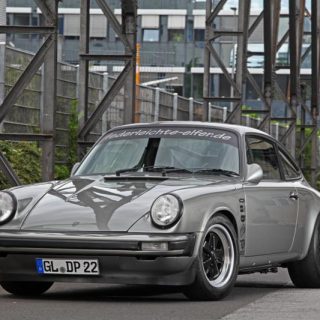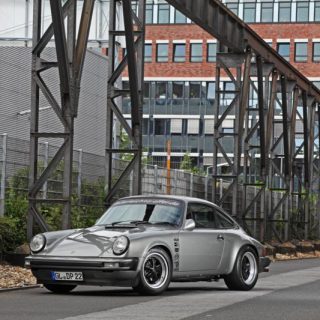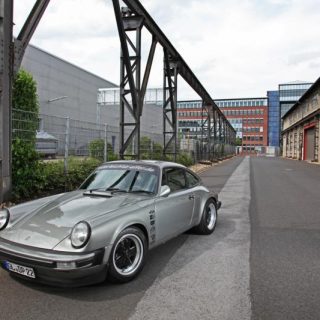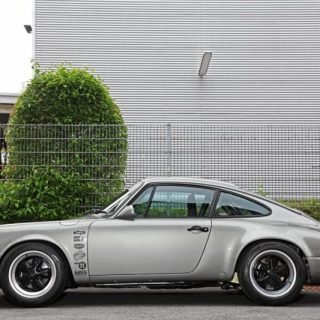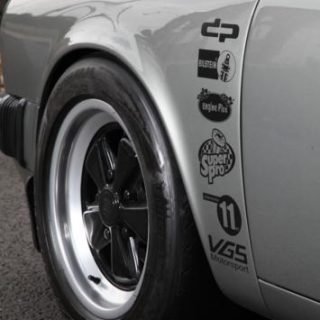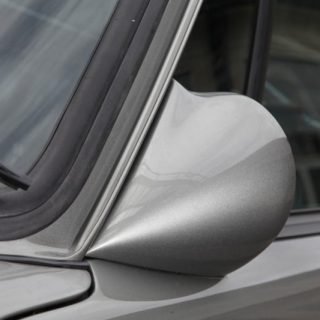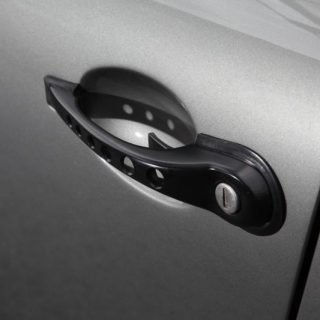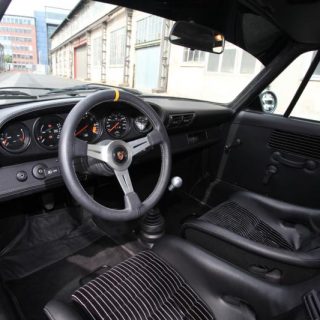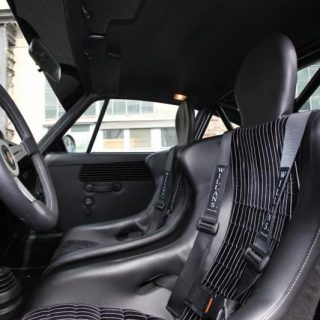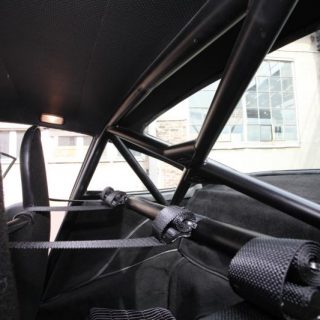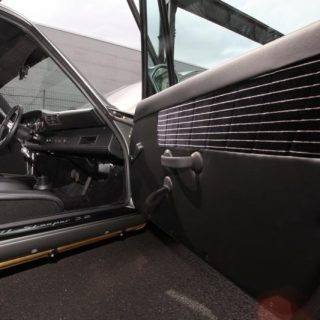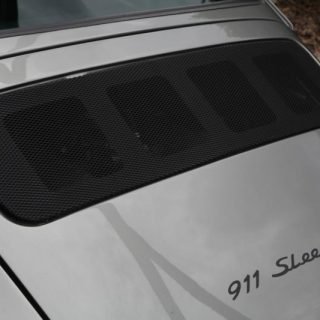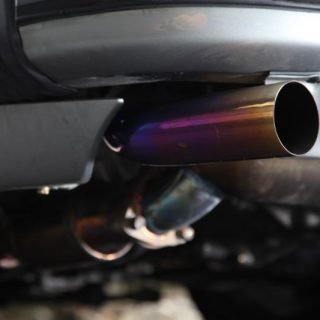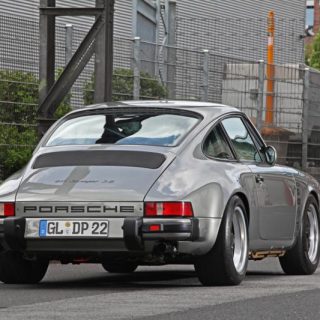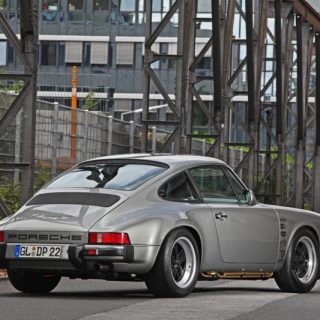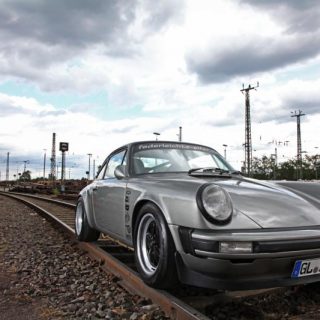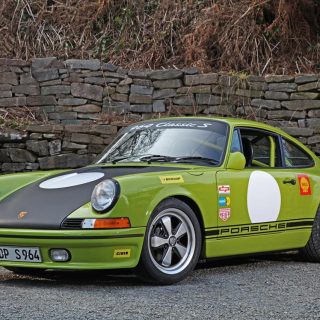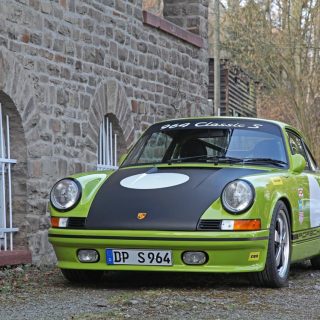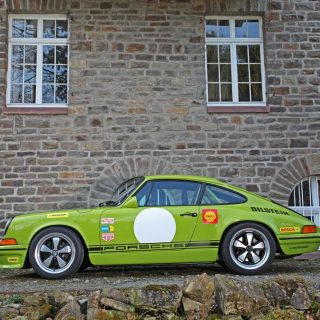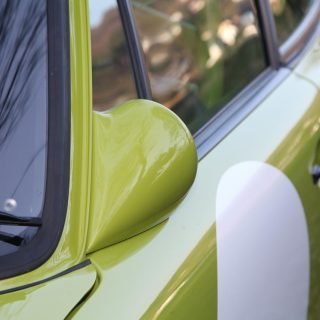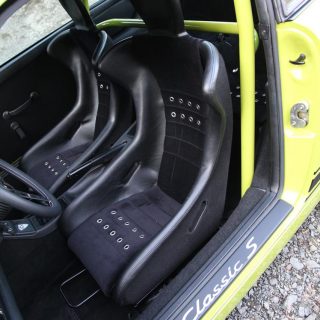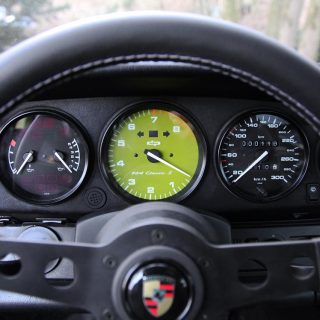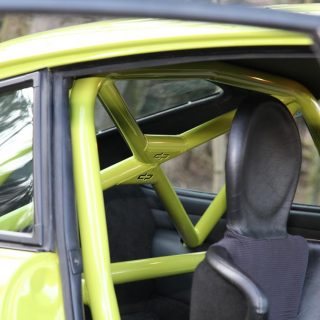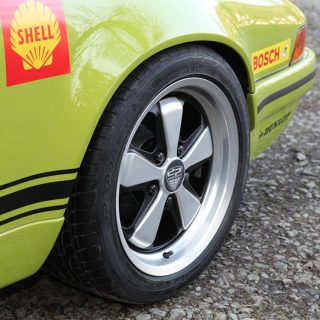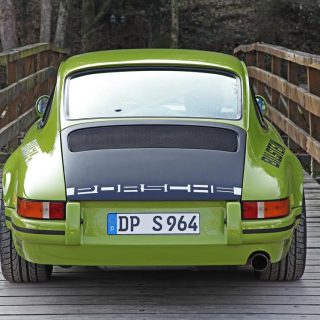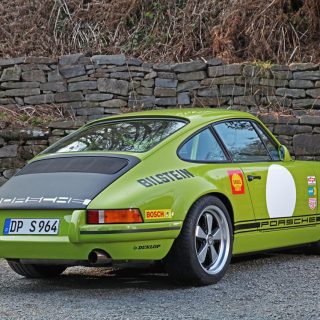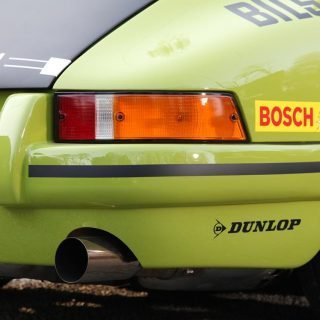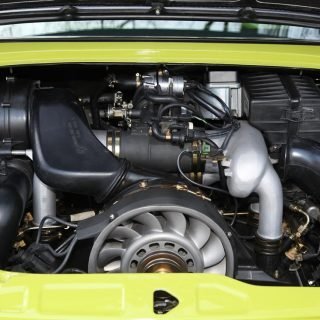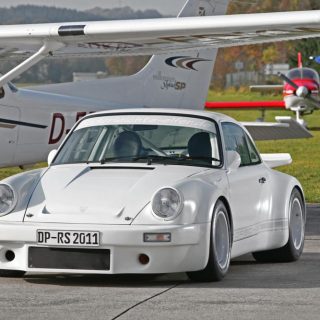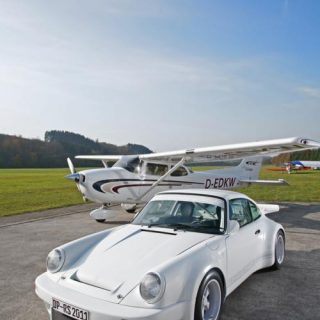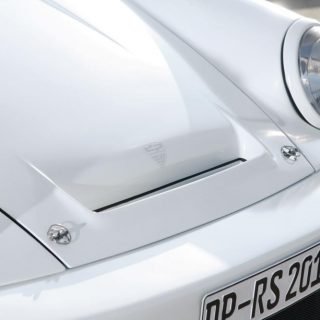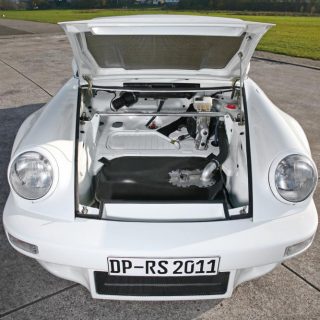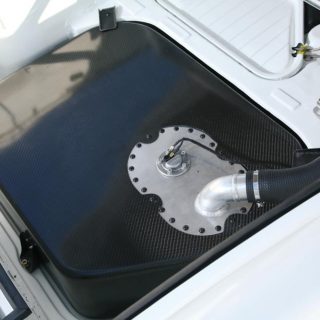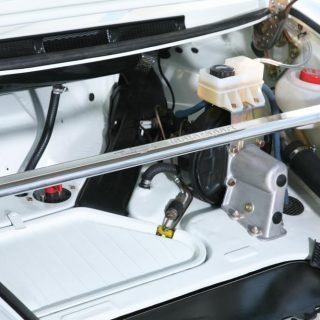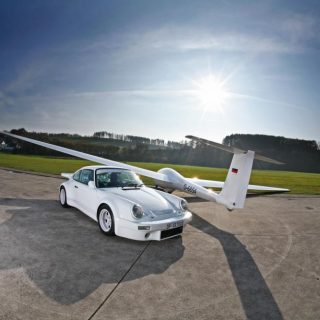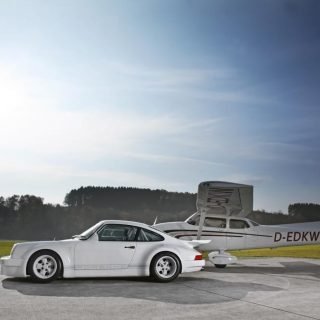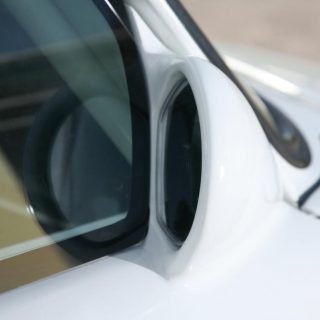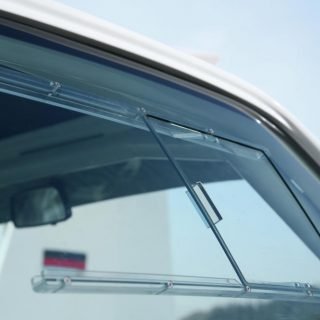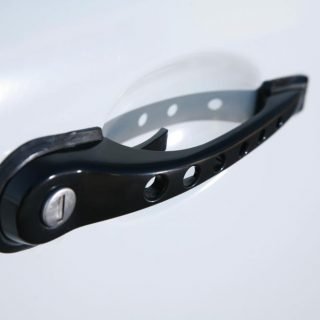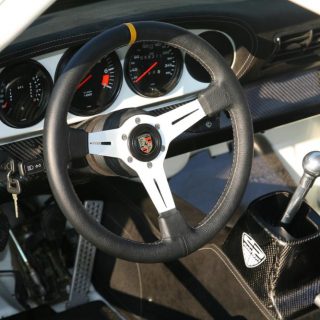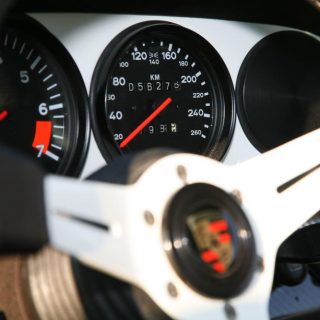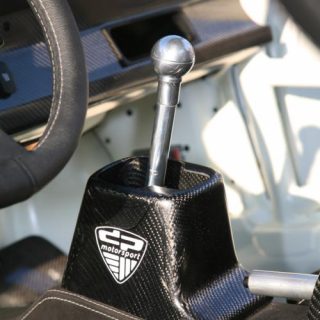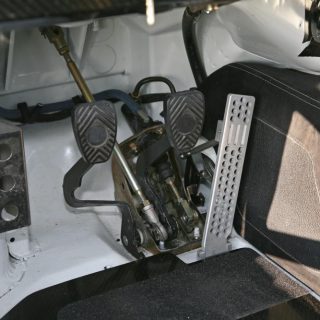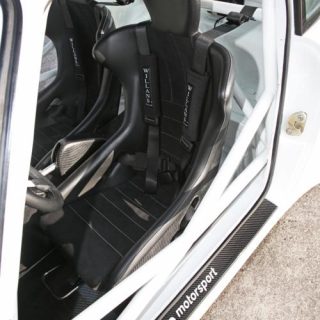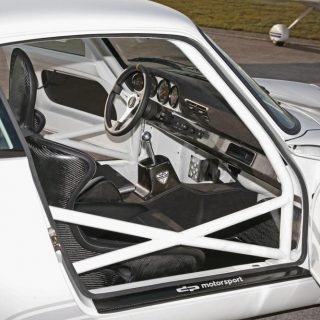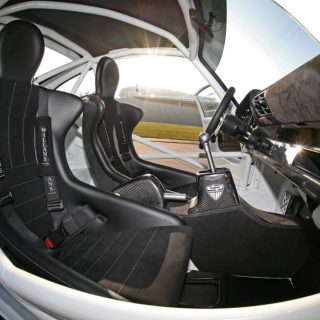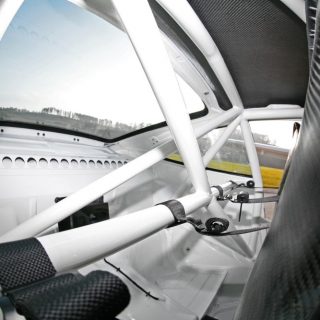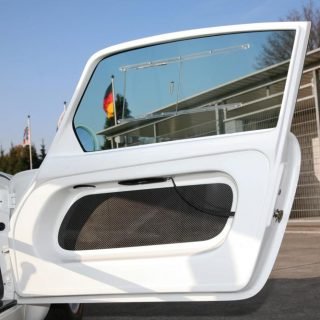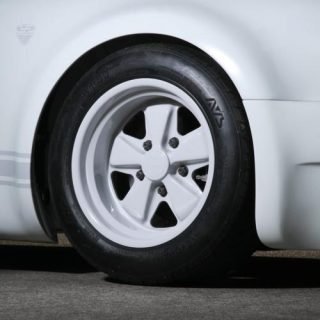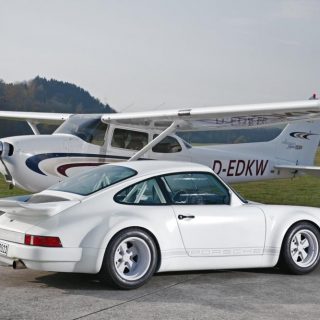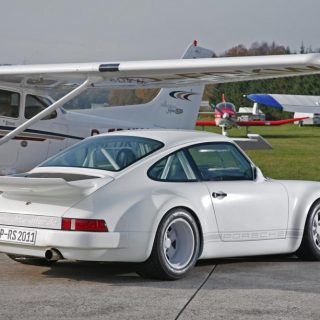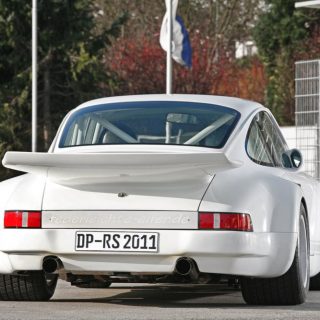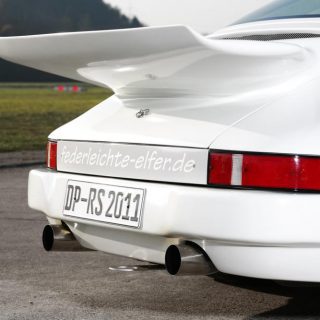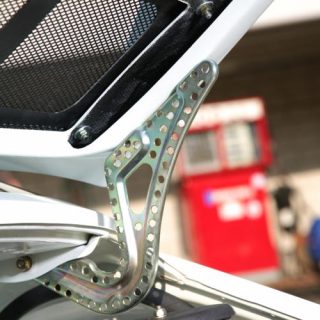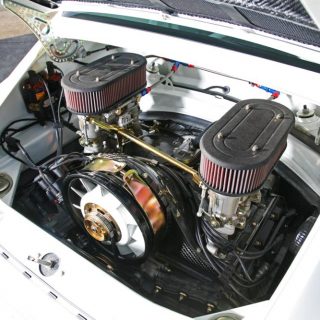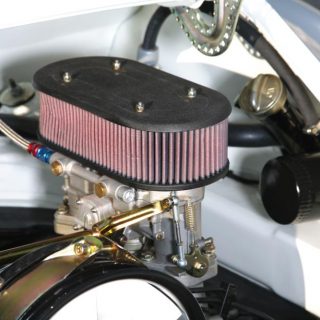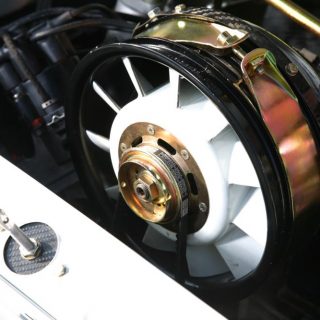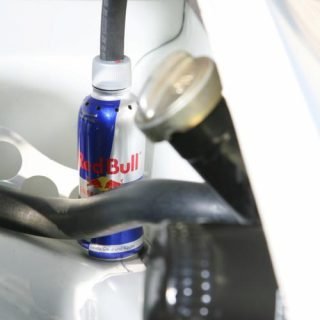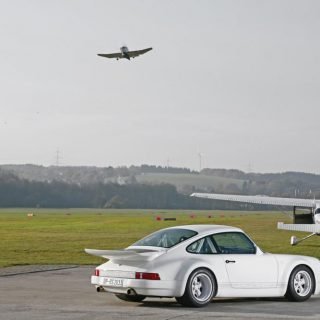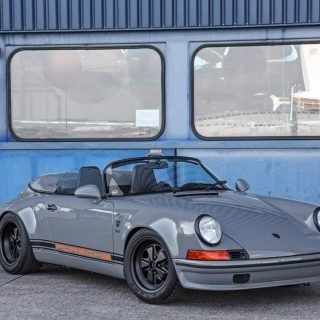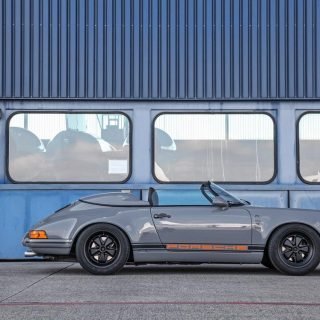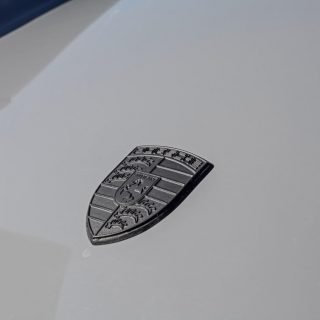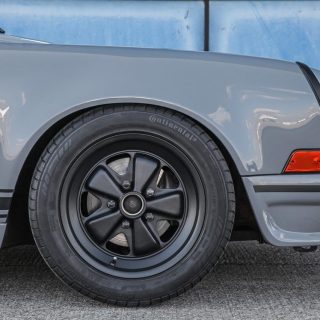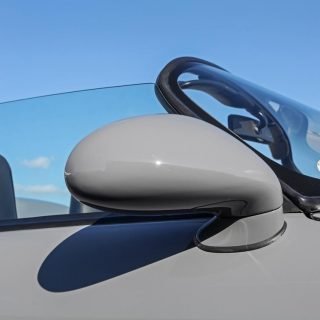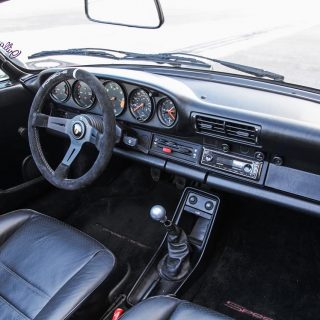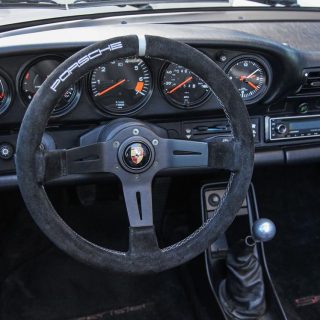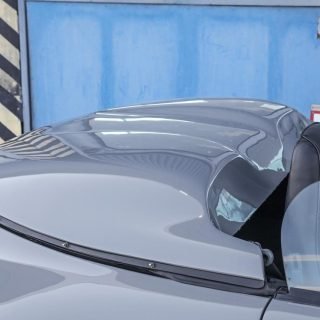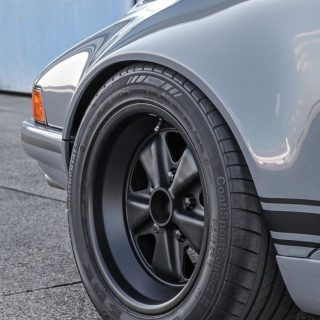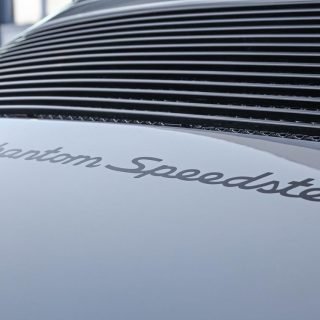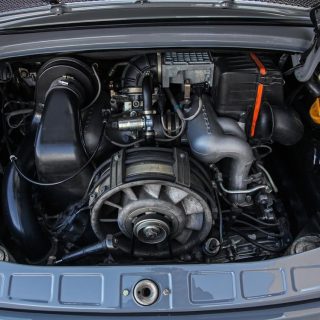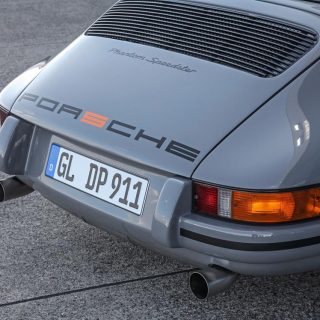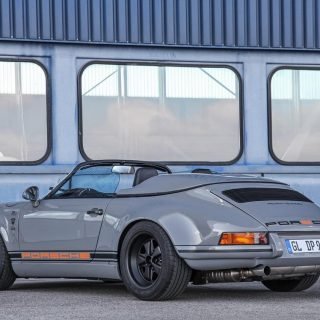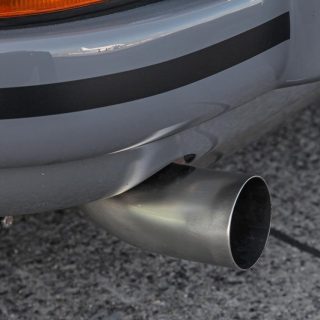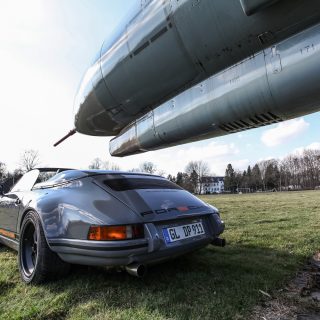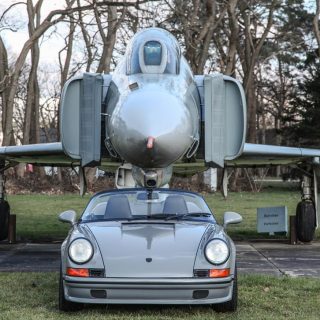911 Sleeper 3.2
A significant proportion of weight was removed from the car when compared to the stock model. A radical 280 kg were shaved off to end up at 905 kg (1995 lb). The body was completely stripped and every bit of paint and undercoating has been removed. Then it was build up again, using only extra light body parts and components. The windows for example, are made of hardened perspex. Hinges and brackets were perforated and galvanized. The perfected 911 body was finally lacquered in metallic rock-green (color code 699). The extreme loss of weight improves three things simultaneously: acceleration, braking effect and side dynamics.
The engine has a displacement of 3.200 cm³ (195,276 cubic inch) with 288-degree Schrick camsshaft and ported and flowed cylinder heads. The throttle valve was enlarged up to 67 mm and further on you will find a lightened flywheel, two 100 cell catalytic converters from HJS as well as an RSR racing exhaust system made of titanium. Performance output after these modifications comes to 270 hp (= 199 kW) and 307 Nm (226,4 ft lb) of maximum torque. The 5-speed 915 gearbox is equipped with a limited slip differential, an external cooler, and of course a short shift mechanism with extended shift lever.
In terms of chassis, street/sport Bilstein-shock absorbers can be found, which are combined with Super Pro polyurethane bushings and Unibal tie rod bearings. A welded-in strut bar gives that extra bit stiffness up front and 7 x 16 and 9 x 16 Fuchs rims are fitted with Michelin semi slicks in 225/50 and 245/45 to provide a proper connection between the car and the road surface. One of the 3.2’s younger brothers, namely a 964 C2, donated the braking system to take care of the negative acceleration.
In the interior of this so called Sleeper you will discover dp935 lollipop-seats with Willans 4-point harnesses, a dp motorsport Club Sport roll bar, a 350mm sport steering wheel and RS-lightweight carpet. The car is also equipped with an electrically heated windscreen, a lightweight 25Ah gel battery and last but not least a special manufactured racing cable harness.
„Lightweight, for an absolute driving experience“ is one of dp motorsport’s beloved quotes. Therefore the Sleeper has no power steering, no ABS and also no ESP. The avoidance of electronic driving aids requires distinctive skills in controlling the vehicle on one hand, but on the other it also allows for an unlimited driving pleasure. All parts installed on the Sleeper are also available separately.
964 Classic S
Starting with a regular Porsche 964, equipped with an anti-lock braking system, a power brake unit, power assisted steering, precise gearshift, modern chassis, sliding sun roof and even A/C for hotter days, the dp 964 Classic S was created. The already existing advantages in the car body are enhanced by a high class and aerodynamically elaborate fibre-glass-kit as well as all adapters and lighting which make the Porsche 964 appear to be made from one piece. The paint in classic lime green is elegantly contrasted by the bonnet in matte black and the white dots for the participant’s race number on the front and each side of the car. The matte black engine covering and sponsor stickers give it the final touch.
The featured power units vary from 290 hp (= 213 kW) generated from 3.6 liters of engine displacement up to 320 hp (= 236 kW) out of a 3.8 liter engine displacement. Additionally, a 9-fold adjustable coilover, made by Bilstein, is implemented, also available with unibal bearing if desired. Concerning the wheel-tire combination the modern, lightweight and forged Fuchs rims, size 7×17 ET55 were used, while tires will be 205/50 ZR17 (front axle) or 255/50 ZR 17 (drive axle) respectively.
Once you sit down in the classic sports seats, fasten the 4-point safety belt and look through the Momo sport type steering wheel you cannot help but notice the rev-counter that leaps into vision. Just like the roll bar, the rev-counter is also highlighted in the same color as the car. Speaking of colors: apart from the classic paint in lime green, variations such as light yellow, blood orange or (sport) classic gray are also offered.
In addition to newly built and completely revised cars, customized individual offers from Classic S, RS to Classic RSR for self-assembly are offered too.
dp11 RS 2011
The rear-engined 911 in white featuring a 3.6 litre Boxer engine impresses with a dp11 RS 2011 bodykit manufactured from carbon, including front bumper and hood, fenders, lightweight doors, rear fender flares, rear bumper and rear spoiler. Alongside the heated green windshield, a set of green-toned Plexiglas windows, as well as lightweight lamp lenses, were installed for the sake of weight saving. Weight reduced tail light lamp holders, as well as air conditioner cover and underride protection from carbon, help chop the weight down to the desired figure. The carbon roof panel has been manufactured using the sandwich vacuum technique, and both hoods are equipped with quick release fasteners.
The capacity of 310 hp (=228 kW), a 50-mm PMO carburetor with open air filters, a programmable ignition curve double fuse combined with a G-50 Gearbox and limited slip differential are the decisive engine/transmission characteristics. Wheels size 9’ x 15’ and 13’ x 15’ by Fuchs coupled with 225/50-15 and 345/35-15 tires represent an adequate link between the vehicle and the road. Apart from the dp coilovers, adjustable stabilizers, as well as head bearing, the spring plates and rear-axle independent arms with Uniball bushings are definitely worth a mention. A braking system originating from a 964 model and adjusted for the 911-G-Modell provides appropriate deceleration.
As for the interior, the dp 935 bucket seats, the light carbon dashboard, a special knee bar set and the raised central tunnel catch the eye at first glance. In contrast to the body colour, the interior is dominated by black alcantara. A welded safety cage, a varnished sports steering wheel with Porsche horn button, a lid instead of the clock and a carbon underbody are impossible to overlook. Finally, such specials are featured as a dp Clubsporttank with the capacity of 70 litres, a 25-amp gel battery starter, a smaller windshield cleaning liquid tank, light electric interior airing system, a middle oil cooler with front hood ventilation, as well as – how could it have been otherwise? – a brake cooling housing made of carbon.
All these modifications ultimately result in bringing the unladen weight of this 911 down to 870 kg (1918 lb) (without fuel), the series standard being 1,080 to 1,335 kg depending on the type and equipment. Carbon made this consequent weight reduction possible.
Phantom Speedster
A perceived as “too modern” Porsche 911 Speedster was “backdated”. Apparently, this particular Speedster already underwent a Phase 1; produced in 1989 in sunny US-American California, the original 911 Targa 3.2 was converted, after meticulously detailed work in the late 1990s, into a Speedster. Subsequently, it made its way to Germany.
The Phase 2 upgrade was implemented by applying the F-Model-Body kits dp11F Carrera-Widebody. Its combination of one inch wider wheel housings, a slightly lowered front bumper as well as unobstrusively designed side sills are truly captivating. A brilliant and thoughtful feature: these side sills cover the oil pipes in order to provide a more attractive trim at the bottom edge of the sills.
The design was developed to achieve an even more sporty and vigorous appearance for this 911. The vehicle height adjustment is handled via the shifting of the torsion bars and the usage of H&R spacer discs improves the roadholding. The existing 2-pipe rear mufflers are visually adapted to the modified rear bumper. Because of the paint job in Nardo-gray, the already extremely flat 911 almost looks like a fighter jet. The 7×16 inch rims with Continental Sport Contact tyres in 205/55-16 on the front axle and 9×16 with 245/45-16 on the rear axle are the perfect match.
